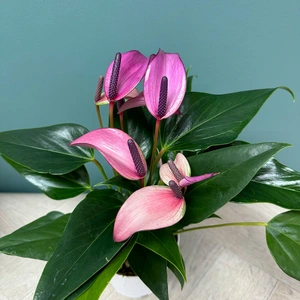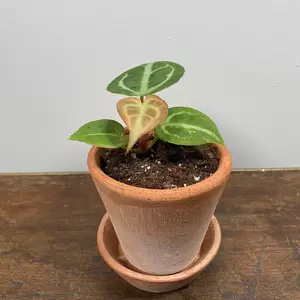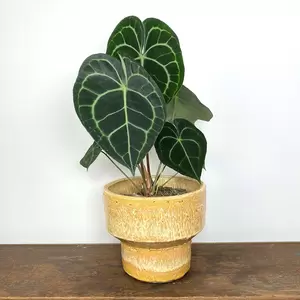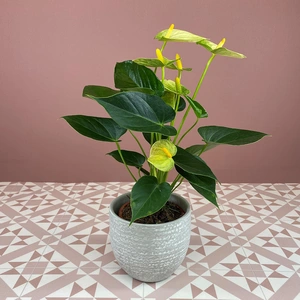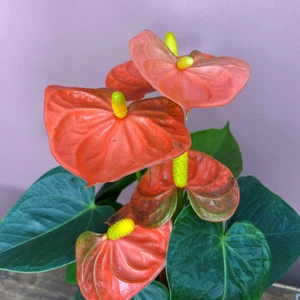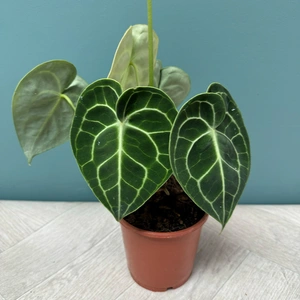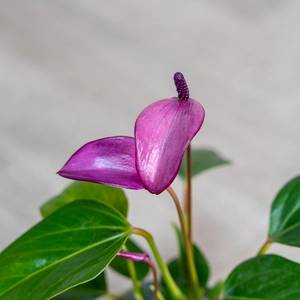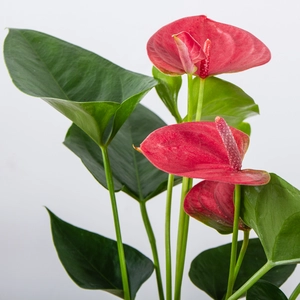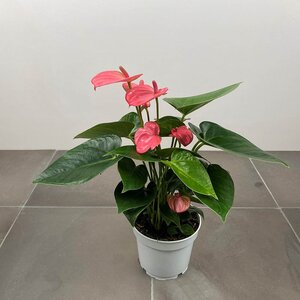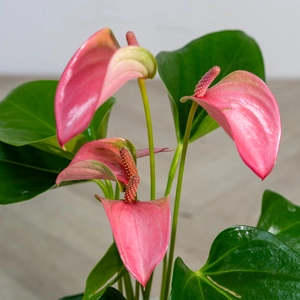Anthurium
Anthurium – Flamingo Flower at Boma Garden Centre
Explore the vibrant world of Anthurium, also known as the Flamingo Flower, at Boma Garden Centre in Kentish Town. Loved for its glossy heart-shaped leaves and long-lasting waxy blooms, Anthurium adds colour and elegance to any indoor space. Perfect for bright rooms with indirect light, this tropical houseplant brings a contemporary, architectural look to homes across London.
At Boma, we stock premium Anthurium varieties ideal for living rooms, kitchens, and office corners. Visit our indoor greenhouse to choose the perfect plant and enjoy expert guidance on watering, feeding, humidity, and ongoing care for thriving, year-round colour.
About Anthurium – Flamingo Flower at Boma Garden Centre
Anthurium – Flamingo Flower Care, Varieties & Buying Guide at Boma Garden Centre
The Anthurium, often called the Flamingo Flower or Laceleaf, is one of the most distinctive and enduring indoor plants for London homes. With its sculptural glossy leaves, waxy heart-shaped spathes and strong architectural stems, the Anthurium has become a favourite for anyone seeking colour, elegance and low-maintenance tropical style. At Boma Garden Centre in Kentish Town, we stock a wide selection of premium Anthurium varieties that thrive indoors and complement modern and classic interiors alike.
Why Choose Anthurium?
Anthuriums are popular for their long-lasting flowers, which can remain vibrant for several weeks. The plants are naturally found in humid, shaded environments, making them perfect for bright rooms with indirect light. They also adapt well to London homes, thriving on consistent moisture, moderate humidity and regular feeding. Anthuriums are excellent choices for living rooms, bedrooms, kitchens, offices and bathrooms, where their bold foliage adds instant sophistication.
Popular Anthurium Types Available at Boma
1. Anthurium andreanum (Flamingo Flower)
The most iconic variety, known for its shiny, colourful spathes in shades of red, pink, white and salmon. Ideal as a statement houseplant on tables or sideboards. Flowers reliably throughout the year with proper care.
2. Anthurium scherzerianum (Painter’s Palette)
Recognised by its twisted, spiral spadix and vibrant waxy blooms. This variety adds a playful, exotic touch and is highly adaptable in warm indoor environments.
3. Anthurium ‘Pink Champion’
A modern favourite with soft blush-pink blooms that brighten contemporary interiors. Perfect for pairing with neutral décor and minimalist styling.
4. Anthurium ‘White Heart’
Elegant and understated with creamy white flowers against deep green foliage. Works beautifully in calm, monochrome or natural interiors.
5. Anthurium clarinervium (Velvet Cardboard Anthurium)
A foliage-first variety prized for its thick, heart-shaped leaves marked with striking white veins. Offers dramatic texture and is ideal for collectors.
6. Anthurium crystallinum
Another foliage classic featuring velvety leaves and pronounced silver veining. Thrives in warm, humid rooms and looks impressive on plant shelves.
Caring for Your Anthurium
-
Light: Bright, indirect light is ideal. Avoid direct sun which can scorch leaves.
-
Watering: Keep the soil lightly moist, allowing the top layer to dry between waterings.
-
Humidity: Prefers moderate to high humidity. Bathrooms or kitchens can be ideal.
-
Feeding: Use a balanced liquid fertiliser every 4–6 weeks during the growing season.
-
Temperature: Optimal range: 18–24°C. Keep away from drafts and radiators.
At Boma, our team can guide you to the best pot covers—such as Elho contemporary planters or ceramic statement pots—to match your home.
FAQs
Is Anthurium toxic to pets?
Yes, Anthuriums can be mildly toxic if chewed. Keep out of reach of pets.
How long do Anthurium flowers last?
Blooms can last 6–8 weeks, and healthy plants flower multiple times a year.
Why are my Anthurium leaves turning brown?
This is usually due to low humidity, underwatering, or too much direct sunlight.
Can Anthurium grow in low light?
It will survive, but flowering reduces significantly. Bright, indirect light gives the best results.






